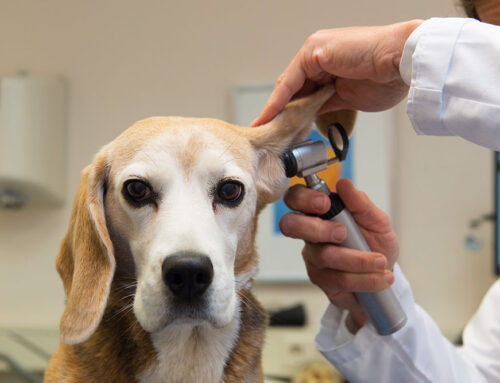Understanding Kidney Disease in Cats: A Guide for Pet Owners
As our feline companions age, their health needs evolve—and among the most common conditions affecting senior cats is Chronic Kidney Disease (CKD). This progressive illness can be subtle at first but has a profound impact on quality of life if left unmanaged. Fortunately, with early detection, supportive treatment, and a proactive care plan, many cats with CKD can live comfortably for years.
This comprehensive guide explores how feline kidneys function, signs of kidney disease, diagnostic tools, treatment options, and how to support your cat’s health long-term.
What the Kidneys Do—and Why It Matters
The kidneys do more than produce urine. These vital organs:
- Filter waste and toxins from the blood
- Maintain fluid and electrolyte balance
- Regulate blood pressure
- Stimulate red blood cell production
When kidney function begins to decline, toxins accumulate in the body and impact multiple organ systems.
Types of Kidney Disease
| Type | Description |
| Chronic Kidney Disease (CKD) | Slow, irreversible decline in kidney function. Most common in cats over 7 years old. |
| Acute Kidney Injury (AKI) | Sudden damage, often due to toxins or infections. Sometimes reversible with quick treatment. |
Learn more: Chronic Kidney Disease in Cats – Cornell Feline Health Center
Spotting the Signs: Symptoms of CKD
Cats are masters at hiding illness, which is why early signs may be overlooked. Here’s what to watch for:
Mild to Moderate CKD
- Increased thirst and urination
- Subtle weight loss
- Decreased appetite
- Vomiting
- Dull or unkempt coat
Advanced CKD
- Muscle wasting
- Pale gums and fatigue (due to anemia)
- Bad breath with a “uremic” smell
- High blood pressure (which can cause sudden blindness)
- Mouth ulcers and drooling
More on feline anemia: Anemia in Cats – Cornell Feline Health Center
Diagnosis: How Vets Identify CKD
Early diagnosis is key. Your vet may recommend:
Blood Tests
- SDMA: Detects kidney changes earlier than creatinine.
- BUN and Creatinine: Indicate waste buildup.
Urinalysis
- Helps assess urine concentration and protein loss.
Blood Pressure Measurement
- Important for spotting hypertension, a common CKD complication.
Imaging (X-rays or Ultrasound)
- Useful for detecting congenital issues like Polycystic Kidney Disease (PKD).
For disease staging and diagnostic standards: IRIS Kidney Guidelines
Managing Kidney Disease: What You Can Do
CKD can’t be cured, but it can be managed with a holistic plan involving hydration, nutrition, medications, and lifestyle adjustments.
Hydration is Essential
- Use water fountains to encourage drinking
- Switch to wet food for higher moisture content
- Administer subcutaneous (SQ) fluids at home for advanced stages
How to Give Subcutaneous Fluids – iCatCare
Prescription Kidney Diets
- Lower phosphorus and protein levels to reduce kidney strain
- Prescription options include Hill’s k/d, Royal Canin Renal, and Purina Pro Plan NF
Medications
- Phosphate binders to reduce toxin buildup
- Antihypertensives (e.g., amlodipine) for blood pressure control
- Erythropoietin supplements for anemia
- Appetite stimulants or anti-nausea medications to support food intake
Explore at-home strategies: CKD Living Guide – MSU VDL
Building a Long-Term Care Plan
Managing CKD is a marathon, not a sprint. Routine evaluations help track disease progression and adjust treatment.
Veterinary Monitoring
- Bloodwork and urinalysis every 3–6 months
- Frequent blood pressure checks
- Medication or diet changes as needed
Home Comfort & Senior Support
- Provide soft bedding and warm places to rest
- Place food, water, and litter in easily accessible areas
- Minimize stress and sudden changes in environment
Helpful resource: Supporting Your Senior Pet – AAHA
Prevention: Can CKD Be Avoided?
While CKD can’t always be prevented, you can take steps to reduce your cat’s risk:
- Provide clean water at all times
- Feed a moisture-rich diet with minimal phosphorus
- Avoid toxins like lilies, antifreeze, and ibuprofen
- Schedule annual wellness exams for early detection
More: IRIS Prevention Guidelines
Related Health Conditions: What Else to Monitor
Feline Hyperthyroidism
Often seen alongside CKD in older cats. Hyperthyroidism can mask kidney issues by increasing blood flow to the kidneys.
- Joint management is critical to prevent rapid deterioration
- Monitor thyroid and kidney values simultaneously
More info: Feline Hyperthyroidism – AAHA Guidelines
Polycystic Kidney Disease (PKD)
This inherited condition causes cysts in the kidneys, common in Persians and related breeds.
- Screening via ultrasound is recommended for at-risk cats
Learn more: PKD – Cornell Feline Health Center

Supporting a Cat with CKD
Living with a cat who has CKD requires commitment, compassion, and consistency. But with proper care and regular veterinary checkups, many cats can thrive for years after diagnosis.
If you have concerns about your cat’s kidney health, early intervention can make all the difference. Schedule an evaluation and start building a personalized care plan today.








Leave A Comment